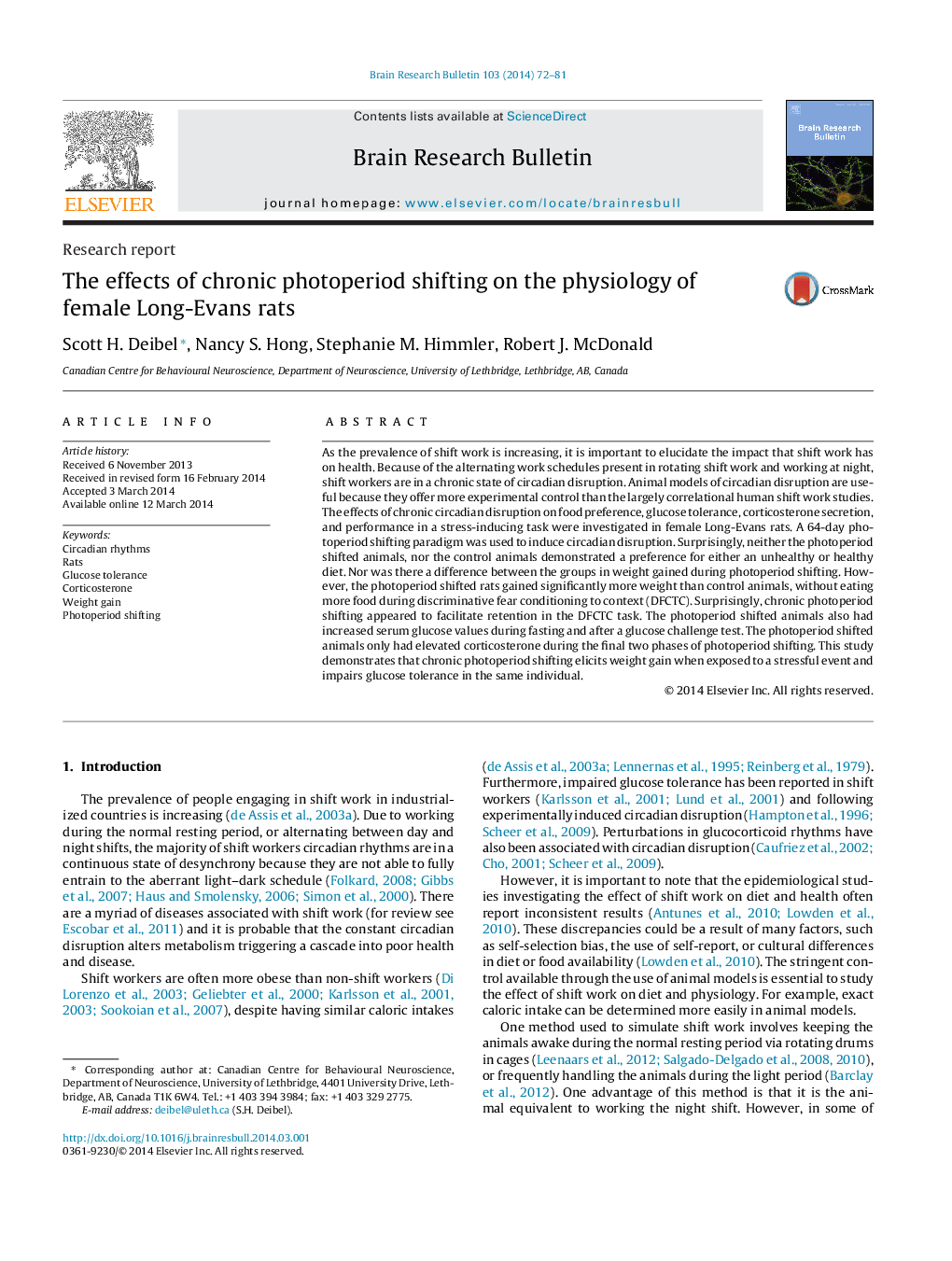| Article ID | Journal | Published Year | Pages | File Type |
|---|---|---|---|---|
| 4318840 | Brain Research Bulletin | 2014 | 10 Pages |
Abstract
As the prevalence of shift work is increasing, it is important to elucidate the impact that shift work has on health. Because of the alternating work schedules present in rotating shift work and working at night, shift workers are in a chronic state of circadian disruption. Animal models of circadian disruption are useful because they offer more experimental control than the largely correlational human shift work studies. The effects of chronic circadian disruption on food preference, glucose tolerance, corticosterone secretion, and performance in a stress-inducing task were investigated in female Long-Evans rats. A 64-day photoperiod shifting paradigm was used to induce circadian disruption. Surprisingly, neither the photoperiod shifted animals, nor the control animals demonstrated a preference for either an unhealthy or healthy diet. Nor was there a difference between the groups in weight gained during photoperiod shifting. However, the photoperiod shifted rats gained significantly more weight than control animals, without eating more food during discriminative fear conditioning to context (DFCTC). Surprisingly, chronic photoperiod shifting appeared to facilitate retention in the DFCTC task. The photoperiod shifted animals also had increased serum glucose values during fasting and after a glucose challenge test. The photoperiod shifted animals only had elevated corticosterone during the final two phases of photoperiod shifting. This study demonstrates that chronic photoperiod shifting elicits weight gain when exposed to a stressful event and impairs glucose tolerance in the same individual.
Related Topics
Life Sciences
Neuroscience
Cellular and Molecular Neuroscience
Authors
Scott H. Deibel, Nancy S. Hong, Stephanie M. Himmler, Robert J. McDonald,
